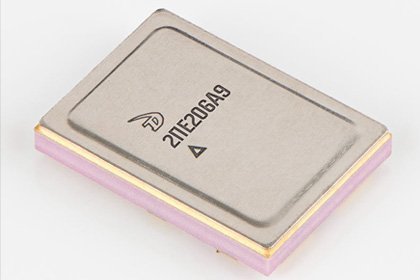Angstrom: A new generation of transistors resistant to cosmic heavy charged particles has been created in Russia

Power transistor 22069. A source
The Russian manufacturer of microelectronics Angstrem OJSC has recently presented a new generation of transistors resistant to space radiation. Since only one company produces such microcircuits all over the world, cooperation with which cannot be fully realized due to the sanctions policy, it is quite natural that the order for development was received through Roscosmos. Briefly about the new product under the cut.
Introduction to the case
The main sources of radiation in earth orbit are the sun and stars. For example, the Sun provides constant massive shelling of satellites and interplanetary stations by protons and electrons, while stars complement the emission of heavy elements by the nuclei. Near the Earth, radiation partially shields the magnetic field of the planet, collecting particles in the so-called radiation belts or belts ( Van Allen belts ). It is these belts that are the most serious problem for spacecraft, and therefore they try to minimize the time spent in them.
The use of standard transistors and microcircuits in space equipment is limited by the snapping effect, and in some cases it is possible only in low orbits. In higher orbits and in deep space, special radiation-resistant products are needed, since spacecraft are not protected by the Earth’s magnetic field.
')
A few years ago, BarsMonster wrote a whole article about protected microelectronics for military and space needs, where he outlined why “ordinary” microelectronics cannot fly into space and why the Russian Federation, as a space power, needs its own production of components. At the beginning of 2013, an article appeared with the analysis and description of the 1886BE10 chip, which is resistant to radiation , from Micron . With some support from your humble servant, we learned what the transistors with the ring gate look like and what they consist of:

The main working layer of the micron chip 1886BE10
Similar reviews were done in 2013 and 2014 by the user amartology ( 1 and 2 ).
However, in addition to microelectronics, rockets, satellites, and research probes use power electronics, which also need some protection. A colleague, tnenergy, recently wrote about how impurities and the uneven distribution of a dopant can be fatal for power electronics.
When you need your own element base
The collapse of the Soviet Union in the early 1990s, freezing and closing, if not most, then many Komos development programs (of which Buran alone and Venus’s research are worthwhile!), Had an impact on the world electronics industry. Development, in fact, stopped, and highly specialized areas, such as the creation of a radiation-resistant element base, became the most vulnerable.
After a number of incidents, the Russian authorities decided to prohibit the sending into space of products whose electronic components ( electronic component base ) are not resistant to the effects of TZCH ( heavy charged particles ).
As noted in the released press release, Roscosmos and Angstrom began to cooperate in 2012 as part of the development of production, which allows you to create equipment for working in near-Earth space, as well as in difficult conditions on earth. And in 2014, the first two series of protected transistors 2PE203, 2PE204 with a voltage from 30 to 100V resistant to the effects of TZCH (heavy charged particles) with an energy of at least 60 MeV · cm 2 / mg were born. Yesterday the second generation was presented:
- 22069 with a resistance of not more than 50 mΩ and a maximum voltage of 140 V when exposed to TSS (heavy charged particles) with an energy of at least 60 MeV · cm 2 / mg,
- 22079 with a resistance of not more than 200 mΩ and a maximum voltage of 200 V when exposed to TSS (heavy charged particles) with an energy of at least 60 MeV · cm 2 / mg.
According to the head of the department for the development of power electronics "Angstrom" Tatyana Kritzkaya: "These transistors should replace foreign analogues. Thus, we will get the independence of the domestic space program from foreign manufacturers. And soon we must complete the development of even more advanced products, 3rd and 4th generation transistors that are resistant to HTT, which will outperform the imported ones and press them on the international market. ”
The presented transistors have a small gate charge and low drain-source resistance in the open state, which will increase the efficiency of on-board power sources. Plus, the development will improve the quality of information processing transmitted from various satellites to earth.
The news is undoubtedly positive, and how, in this connection, can one not recall the presentation of the nuclear power plant from RosCosmos ?!
PS: Please report any inaccuracies or errors to HP.
UPD: I didn’t quite understand why Angstrem writers consider similar products “only one company produces,” they are actually several (rad-hard transistor): ST , Aeroflex , Infineon , SemiCoa .
Sometimes briefly, and sometimes not so much about the news of science and technology, you can read on my Telegram channel - welcome;)
Source: https://habr.com/ru/post/395797/
All Articles